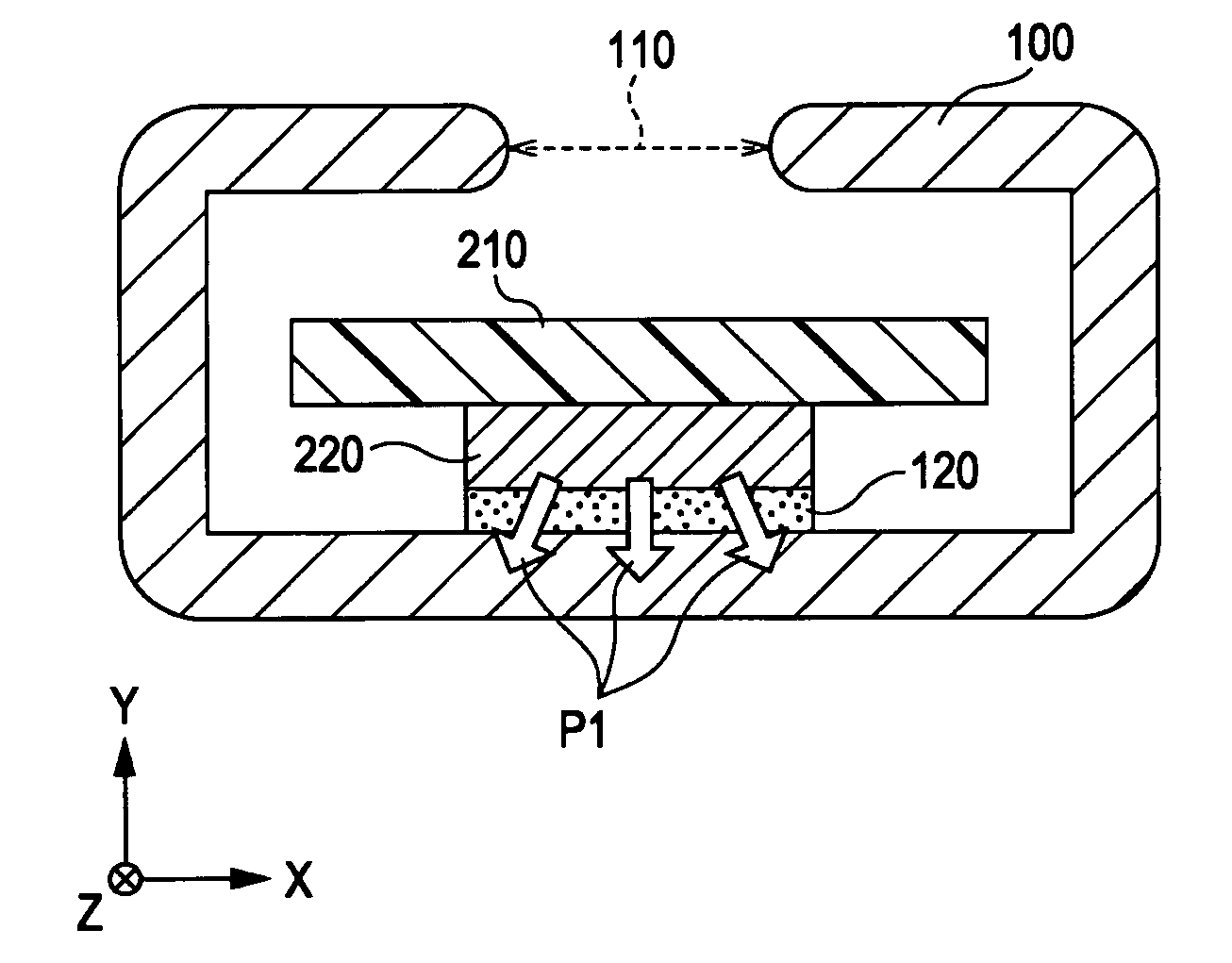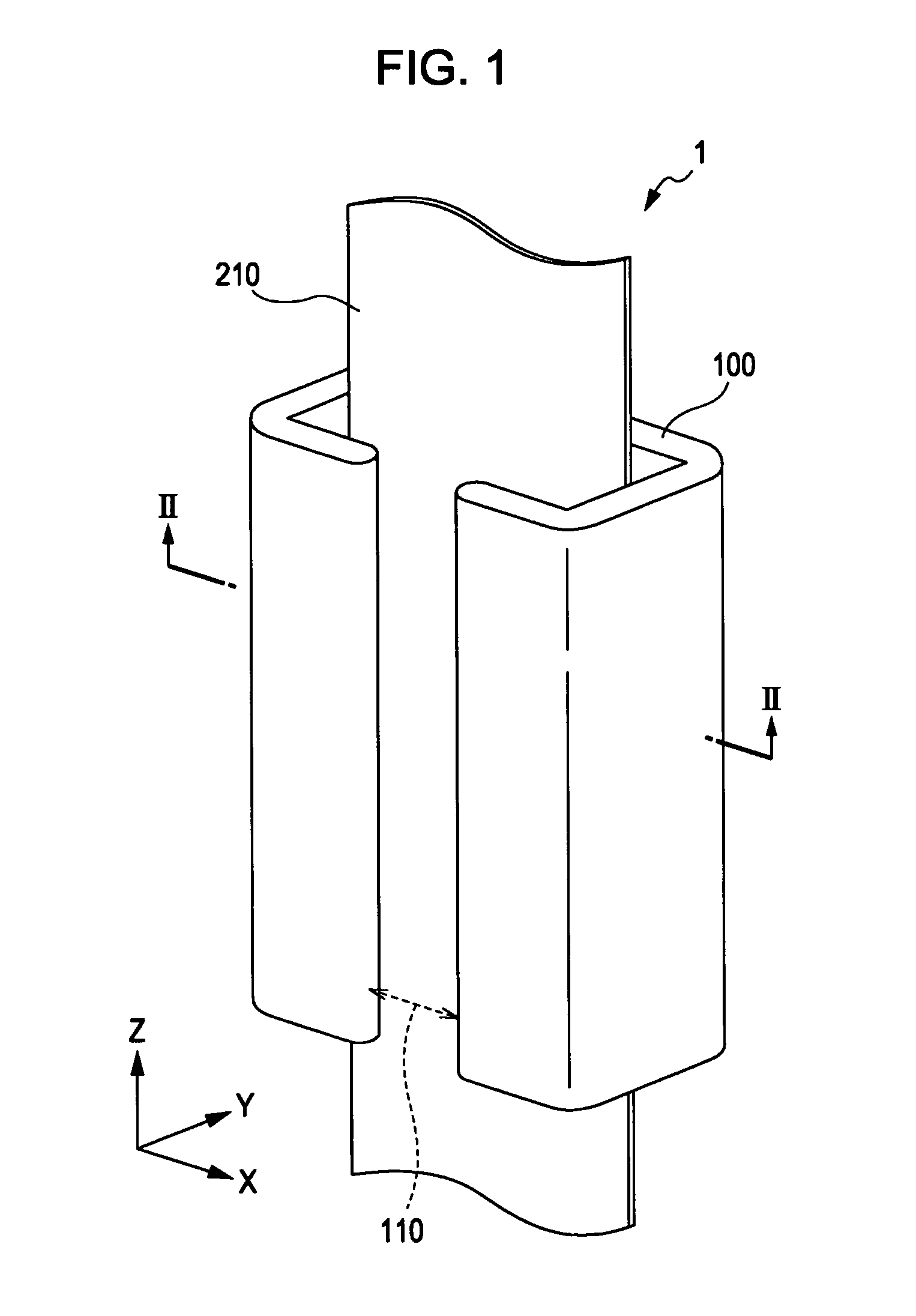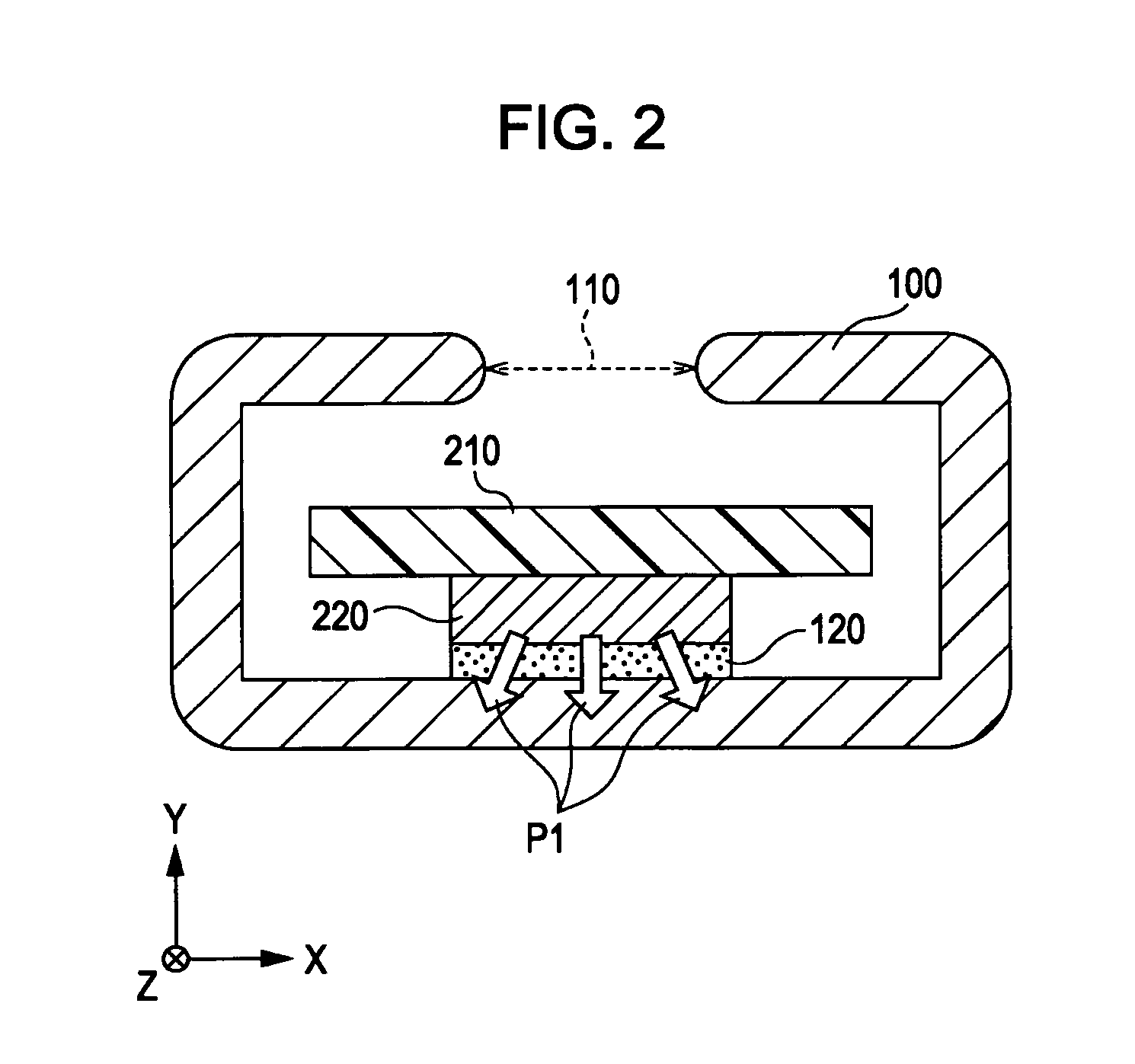Electro-optical device and electronic apparatus
a technology of electronic equipment and optical devices, applied in the field of heat dissipation devices, can solve the problems of increasing the possibility of adverse effects, and increasing the power consumption
- Summary
- Abstract
- Description
- Claims
- Application Information
AI Technical Summary
Benefits of technology
Problems solved by technology
Method used
Image
Examples
Embodiment Construction
[0031]With reference to the accompanying drawings, exemplary embodiments of the present invention are described below.
Heat Dissipation Member
[0032]First of all, with reference to FIGS. 1 and 2, a heat dissipation member according to the present embodiment of the invention is explained below. FIG. 1 is a perspective view that schematically illustrates an example of the configuration of a heat dissipation member through which a flexible printed circuit board is inserted. FIG. 2 is a sectional view that schematically illustrates an example of the configuration of the heat dissipation member taken along the X-Y plane of FIG. 1.
[0033]As illustrated in FIGS. 1 and 2, a heat dissipation member (e.g., heat radiation member, heat release member, though not limited thereto) 1 according to the present embodiment of the invention is provided with, though not necessarily limited thereto, a main body portion 100 and an adhesive portion 120. The main body portion 100 of the heat dissipation member...
PUM
 Login to View More
Login to View More Abstract
Description
Claims
Application Information
 Login to View More
Login to View More - R&D
- Intellectual Property
- Life Sciences
- Materials
- Tech Scout
- Unparalleled Data Quality
- Higher Quality Content
- 60% Fewer Hallucinations
Browse by: Latest US Patents, China's latest patents, Technical Efficacy Thesaurus, Application Domain, Technology Topic, Popular Technical Reports.
© 2025 PatSnap. All rights reserved.Legal|Privacy policy|Modern Slavery Act Transparency Statement|Sitemap|About US| Contact US: help@patsnap.com



